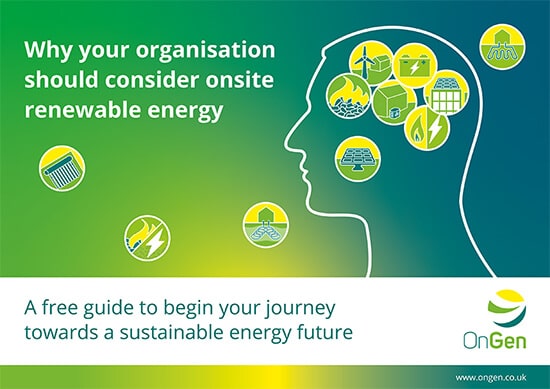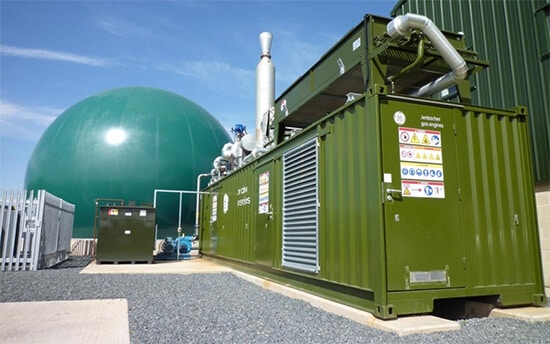Biomass Combined Heat and Power (CHP) Systems

What is Biomass Combined Heat and Power (CHP) Systems?
CHP systems, also known as cogeneration systems, provide both heat and power from a single source of energy; working to the principles of a Stirling engine. Unlike central station generation, CHP is a type of distributed generation which is located at or near the point of consumption.
By using the heat created, which is normally a by-product that would be lost, CHP systems typically achieve efficiencies greater than 80%. It therefore makes sense to consider CHP units when there is a need for both power and heat at a site. The technology can also be deployed quickly, cost-effectively, and with few geographic limitations.
The term CHP covers a suite of technologies that can use a variety of fuels, e.g. biomass or gas, to generate electricity or power at the point of use. In a biomass CHP system, the input fuel is biomass, typically wood chip or wood pellets. Biomass CHP is particularly useful when the site is off the mains gas grid and where biomass fuel is readily available.
By using the heat created, which is normally a by-product that would be lost, CHP systems typically achieve efficiencies greater than 80%. It therefore makes sense to consider CHP units when there is a need for both power and heat at a site. The technology can also be deployed quickly, cost-effectively, and with few geographic limitations.
The term CHP covers a suite of technologies that can use a variety of fuels, e.g. biomass or gas, to generate electricity or power at the point of use. In a biomass CHP system, the input fuel is biomass, typically wood chip or wood pellets. Biomass CHP is particularly useful when the site is off the mains gas grid and where biomass fuel is readily available.
How do Biomass Combined Heat and Power (CHP) Systems work?
Small-scale biomass CHP boilers usually rely on pyrolysis (heating the fuel in the absence of air). This produces syngas which is a mixture of hydrogen and carbon monoxide with a little carbon dioxide. This gas is fed through a spark ignition engine, which in essence is the same as a gas-powered CHP unit. The goal is to produce ‘clean’ gas as the carbon released from burning the biomass is roughly equal to what was absorbed during its growth.
Maintenance of small-scale biomass CHP is far greater than with mains gas powered CHP. Medium and large-scale biomass CHP systems tend to use steam to drive a turbine or Organic Rankine Cycle (ORC) that uses a turbine driven by gas which boils at a lower temperature than water. Both are mature technologies with excellent durability and reliability, which call for far less maintenance than is required for gasification CHP.
While most gas-powered CHP units can ‘modulate’ (respond to reduced electrical or heat load, usually to around 50% of peak output), biomass CHP boilers will run at maximum output consistently – they cannot run on part load. As a result, the ideal biomass CHP project is for the unit to provide a base load of electricity and heat, with the unit running for as close to 8,000 hours as possible.
Maintenance of small-scale biomass CHP is far greater than with mains gas powered CHP. Medium and large-scale biomass CHP systems tend to use steam to drive a turbine or Organic Rankine Cycle (ORC) that uses a turbine driven by gas which boils at a lower temperature than water. Both are mature technologies with excellent durability and reliability, which call for far less maintenance than is required for gasification CHP.
While most gas-powered CHP units can ‘modulate’ (respond to reduced electrical or heat load, usually to around 50% of peak output), biomass CHP boilers will run at maximum output consistently – they cannot run on part load. As a result, the ideal biomass CHP project is for the unit to provide a base load of electricity and heat, with the unit running for as close to 8,000 hours as possible.
OnGen offers a three-step process through OnGen Expert, OnEfficiency & OnSupply. Steps can be done holistically or separately.

Talk to one of our team
Book a 20-minute conversation to discuss how we can help you by providing the right information, to make the right decisions.


Download our free Renewable Energy Guide
Case Study
“By assessing solar capability using the OnGen Expert software, we have been able to identify 4,000 tonnes of potential carbon savings in our city-centre building stock. OnGen has made it simple and easy for us to demonstrate potential energy costs savings of £2.9 million across the lifetime of potential onsite renewable installations. The OnGen Expert software has shown us the potential of onsite generation at a fraction of the cost of traditional assessments/consultants.”
NEYH
Book a conversation with OnGen today
Interested in finding out more information? Set up a meeting with a member of our team to discuss how we can help you.









